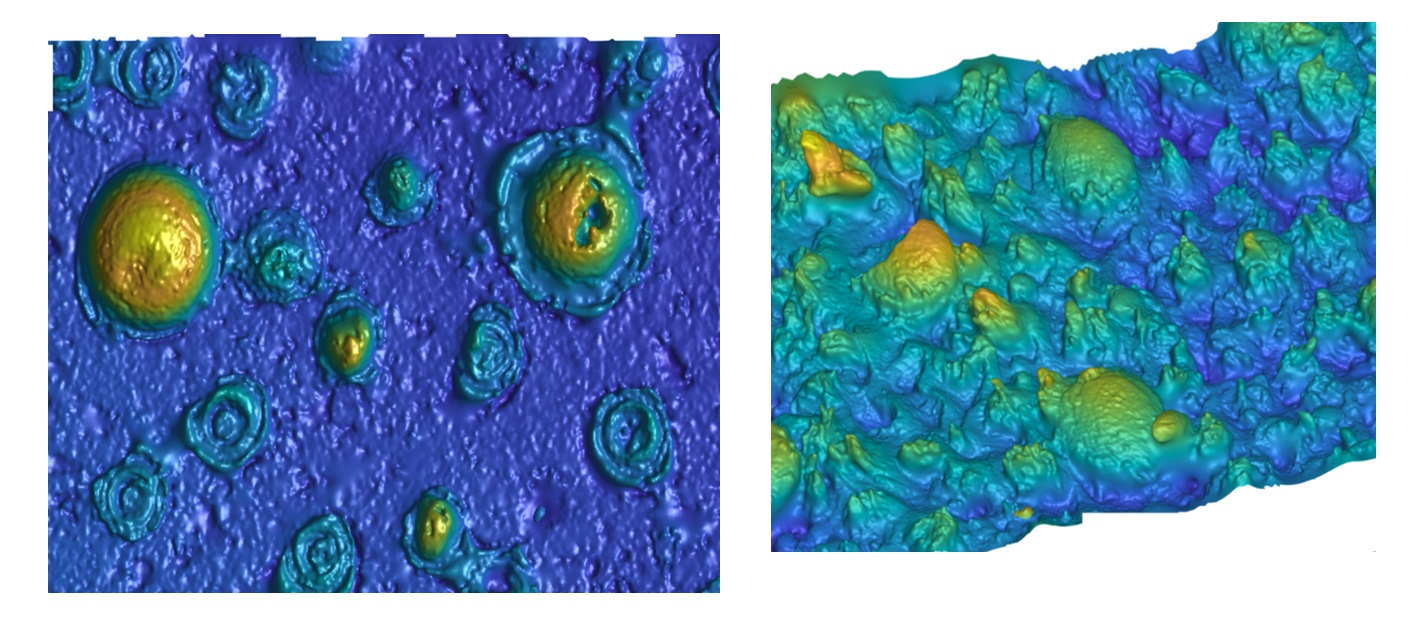Nov 12 2020
The tongue is an organ that helps people taste food. However, the structures present on its surface also help people to sense textures––something very essential while savoring a meal.
 The topography of a 3D-printed, tongue-mimicking surface (left) looks like a mask made from a real human tongue (right). Image Credit: ACS Applied Materials & Interfaces 2020.
The topography of a 3D-printed, tongue-mimicking surface (left) looks like a mask made from a real human tongue (right). Image Credit: ACS Applied Materials & Interfaces 2020.
Scientists have developed a 3D silicone surface that mimics, for the first time, the surface features of the human tongue. The material could assist food scientists in the analysis of mechanical interactions of foods, liquids, and also medicines with the organ. The findings of the study were reported in ACS Applied Materials & Interfaces.
In humans, the tongue plays the vital role of moving food around within the mouth, sensing taste and texture, as well as speech. The tongue’s surface is covered with thousands of small bumps, or papillae, which include the taste buds and offer lubrication and friction.
Learning how liquids and foods interact mechanically with the tongue could enable drug developers, food scientists, and manufacturers of mouthwashes or toothpaste to make more preferred products.
At present, researchers depend mostly on human tasters to assess texture or mouthfeel. However, this is costly, subjective, and laborious. Although electronic tongues, or e-tongues, are available to serve this purpose, most of them examine taste, and some developed to analyze the texture are not so precise. Anwesha Sarkar and collaborators wished to design a soft 3D surface that mimics the wettability and topography of a real human tongue.
The researchers started by making silicone masks of the tongue surfaces of 15 healthy adults. They used 3D optical scanning and computational surface reconstructions to develop digital models and quantified the average height, diameter, and density of the two significant types of papillae.
They then developed a master mold with a suitable spatial distribution of such papillae and 3D printed it. Subsequently, the mold was used to create soft, tongue-like silicone surfaces, where a surfactant was added to enhance wettability.
Tests revealed that the 3D biomimetic surface exhibited frictional properties similar to a real human tongue, and simulations demonstrated similar mechanical sensing properties. According to the researchers, the tongue-like surface could help speed up the development of clinical, biomedical, and nutritional products, and could be useful in soft robotics.
Journal Reference:
Andablo-Reyes, E., et al. (2020) 3D Biomimetic Tongue-Emulating Surfaces for Tribological Applications. ACS Applied Materials & Interfaces. doi.org/10.1021/acsami.0c12925.